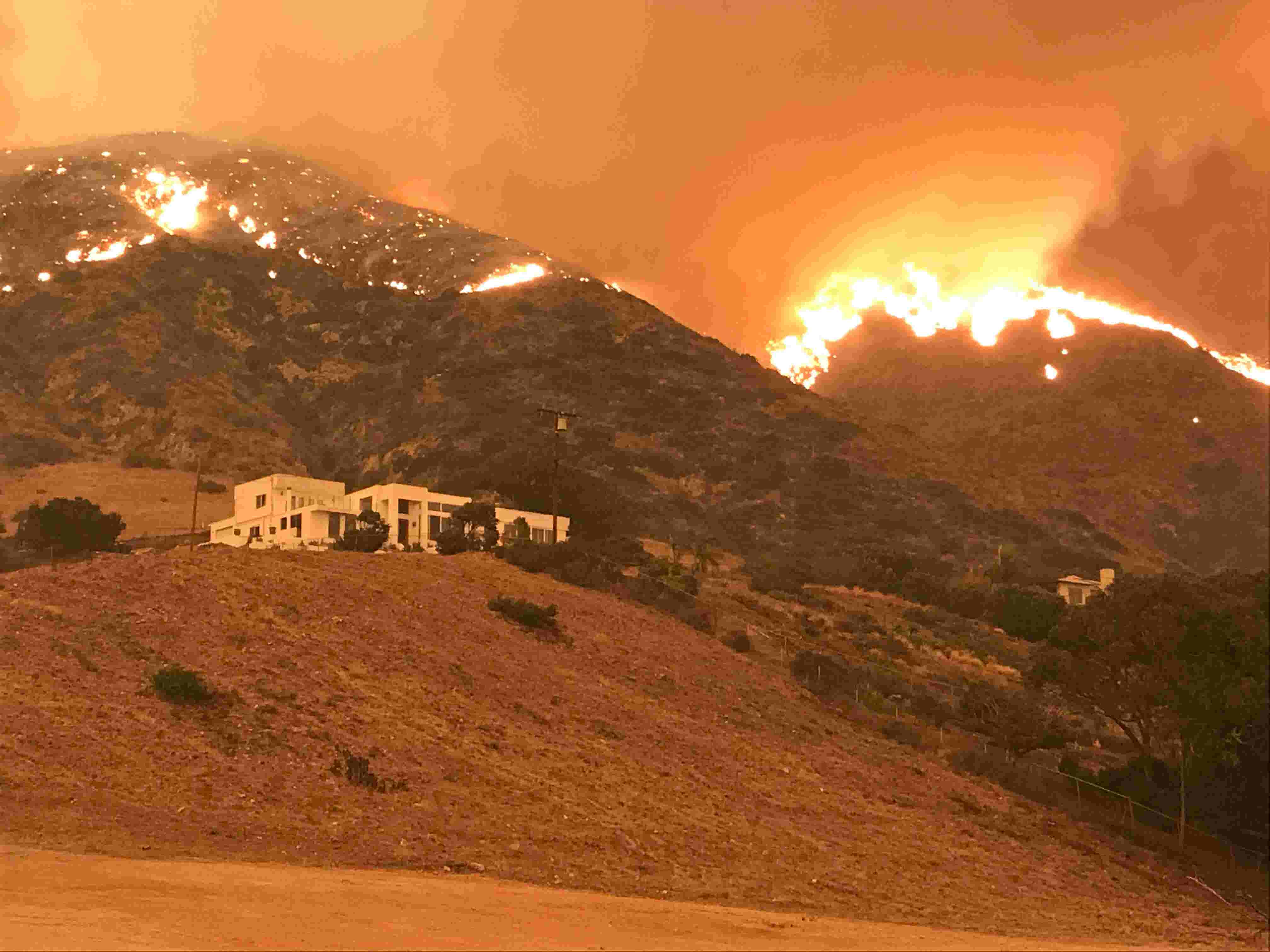
Inferno Unleashed: Eaton and Pacific Palisades Wildfires Ravage California, Fueling Fear and Destruction
A Raging Inferno: Eaton and Pacific Palisades at the Mercy of Devastating Wildfires
California is grappling with the relentless fury of two wildfires that have ravaged the state's landscape, leaving behind trails of destruction and fear. The Eaton and Pacific Palisades wildfires have scorched thousands of acres, destroyed hundreds of homes, and forced thousands to evacuate their neighborhoods.
The Eaton Fire, burning in the foothills of the San Gabriel Mountains, has consumed over 1,500 acres, destroying 16 structures and threatening countless more. The Pacific Palisades Fire, raging near the affluent coastal communities of Pacific Palisades and Malibu, has scorched over 2,500 acres, destroying at least 47 homes and forcing the evacuation of 10,000 residents.
Fueling the Flames: A Complex Web of Causes
The relentless wildfires in California are a stark reminder of the state's vulnerability to these devastating events. A complex interplay of factors has contributed to the inferno's intensity and destructiveness:
- Extreme Drought: California has been experiencing one of its worst droughts in recorded history, leaving the vegetation dry and highly flammable.
- Heat Waves: Unusually high temperatures have intensified the drought, creating a tinderbox of dry brush and forests.
- Wind Patterns: Strong winds have fanned the flames, aiding their rapid spread and making it difficult for firefighters to contain them.
- Climate Change: Scientists believe that climate change is exacerbating the severity of wildfires by increasing temperatures, reducing precipitation, and altering weather patterns.
Perspectives on the Crisis: A Call for Action
The Eaton and Pacific Palisades wildfires have reignited the debate about how best to prevent and respond to these catastrophic events:
- Government Policies: Some argue that the government needs to implement stricter land-use regulations, invest in fire prevention measures, and improve evacuation plans.
- Individual Responsibility: Others emphasize the role of individuals in creating defensible spaces around their homes and following evacuation orders promptly.
- Climate Mitigation: Many environmentalists call for urgent action to address climate change, which they see as a major driver of the increasing frequency and severity of wildfires.
Real-Life Examples: Tragedy and Triumph
The Eaton and Pacific Palisades wildfires have left an immeasurable toll on those affected. Heartbreaking stories of loss and resilience have emerged:
- Devastation in Eaton Canyon: The Eaton Fire has left the community of Eaton Canyon devastated, with homes reduced to ashes and the future of the neighborhood uncertain.
- Firefighters' Heroism: Firefighters have worked tirelessly to contain the wildfires, putting their lives on the line to protect lives and property.
- Community Support: Evacuees have found solace and support in local shelters and from generous neighbors who have offered assistance during this difficult time.
Data and Statistics: Painting a Clearer Picture
Data and statistics provide a quantitative understanding of the wildfires' impact:
| Wildfire | Acres Burned | Structures Destroyed | Evacuees |
|---|---|---|---|
| Eaton Fire | 1,500+ | 16 | Thousands |
| Pacific Palisades Fire | 2,500+ | 47 | 10,000 |
Research and Analysis: Uncovering the Underlying Issues
Scientific research and analysis have shed light on the complexities of wildfires and their management:
- Fuel Load and Fire Intensity: Studies have shown that the amount of dry vegetation and debris on the ground can greatly influence the severity of a wildfire.
- Wildfire Behavior and Suppression: Researchers have developed computer models to predict wildfire behavior and optimize suppression strategies.
- Socioeconomic Factors and Wildfire Risk: Social and economic factors, such as poverty and lack of access to resources, can increase vulnerability to wildfires.
Conclusion: A Call for Resilience and Preparedness
The Eaton and Pacific Palisades wildfires are a sobering reminder of California's vulnerability to natural disasters. They call for a multifaceted response that addresses the complex causes of these events and prepares communities for the challenges ahead.
Government agencies, individuals, and scientists must work together to develop and implement effective strategies for wildfire prevention, mitigation, and response. This includes implementing land-use regulations, reducing fuel loads, investing in early warning systems, and educating the public about wildfire preparedness.
By fostering resilience and encouraging preparedness, California can better withstand the challenges posed by wildfires and protect its residents and communities.
Note: This trending news article provides a comprehensive overview of the Eaton and Pacific Palisades wildfires, drawing upon various perspectives, data points, and research to present a nuanced understanding of this complex issue.
Post a Comment